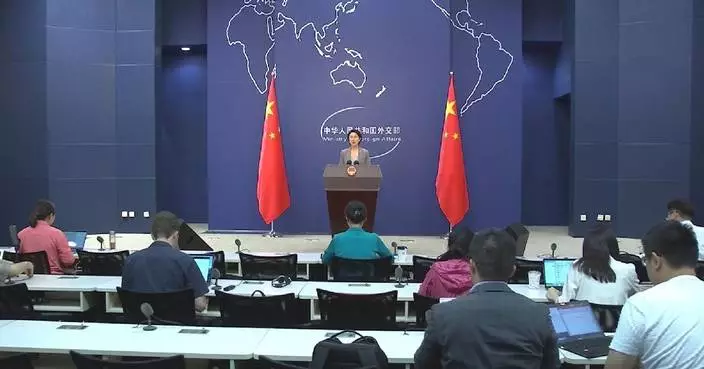The Shenzhen-Zhongshan Link, a core transportation hub project in the Guangdong-Hong Kong-Macao Greater Bay Area city cluster in south China, will empower enterprises in Zhongshan City, dubbed as Shenzhen's backyard, to expand operations and cut costs as shorter travel time and easier access by the link will facilitate a seamless flow of people, goods, and capital between the two cities.
With a total length of 24 kilometers, the Shenzhen-Zhongshan Link opened to traffic at 15:00 local time on Sunday, cutting the travel time between Shenzhen and Zhongshan from the previous two hours to about 30 minutes.
The link consists of one underwater tunnel, two bridges and two artificial islands, making it one of the most challenging cross-sea cluster projects in the world.
Michelle Xia, CEO and chairwoman of Akeso, a Chinese biopharmaceutical company, said the company has moved to a high-tech industrial park in Zhongshan since last year. Situated near the Zhongshan Bridge of the link, the park offers geographical advantage for Akeso's operations.
Xia proudly highlighted that Akeso boasts world-leading production facilities for making bispecific antibodies -- artificial proteins that can eliminate cancer cells more effectively.
"It used to take up to a decade for a foreign drug to be approved in China, especially for major illnesses. Our vision was to make sure Chinese people can also benefit from new effective drugs produced with cutting-edge technology, without delay. The Zhongshan government has supported us every step of the way, from initial funding to R and D, clinical trials and now mass production," Xia said.
According to Xia, the significantly reduced travel time between Shenzhen and Zhongshan, made possible by the link, will have a transformative impact on their business operations. It will enable Akeso to connect with a broader network of partners and clients, expanding their reach and fostering stronger collaborations.
"We knew about this mega project when we started in 2012 and have been waiting for this day. More than a decade later, it's finally open. Nowadays, businesses are looking across China and the world for expansion. Being closer to airports in Shenzhen and Guangzhou makes a huge difference. More suppliers will visit, and more talent will come. We are essentially in Shenzhen's backyard," Xia said.
Being in Shenzhen's backyard brings direct advantages to Zhongshan's traditional manufacturers. There are 50,000 companies supplying lighting products and parts in the city.
"The new link will accelerate the flow of people, goods, information and money. Proximity to an innovative city like Shenzhen will transform our industry. In the last year, we've seen exports steadily grow, surpassing pre-pandemic numbers by up to eight percent. Companies that export through ports in Shenzhen and Guangzhou will now have a faster route that reduces their costs," said Ou Decheng, secretary general of the Zhongshan Lighting Appliances Association.
The Guangdong-Hong Kong-Macao Greater Bay Area, encompassing both high-tech and traditional industries, constitutes a substantial 11 percent of China's GDP. But a significant disparity exists between the economic output of the east and west banks of the Pearl River Delta, with one side generating five times more value than the other. So, the operation of the link will play a pivotal role in bridging this gap and fostering balanced regional economic development.

Shenzhen-Zhongshan Link to boost local industries with enhanced connectivity

Shenzhen-Zhongshan Link to boost local industries with enhanced connectivity









